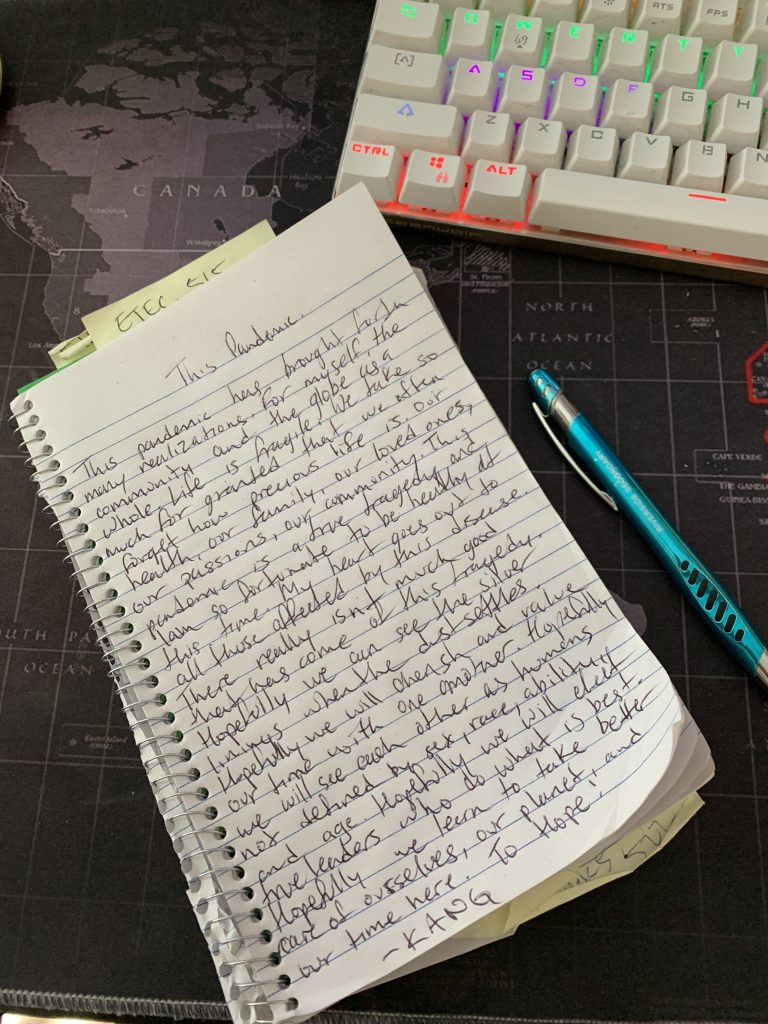The Notepad:
As mentioned in Task 1, my notepad is always available. I use this pad mainly for the MET program, but it also serves as a calendar of reminders, notes, or even doodles. For myself, the notepad is the easiest way to quickly transcribe my thoughts down onto paper. So, this task was easy in terms of letting ideas flow. I did not think about what I was writing I just let the pen translate what my thoughts were. The notepad is typically used for short, concise notes which then get transferred onto the computer. So, I was not quite used to writing down such large bits of information. However, this was not a difficult task. As I was writing this reflection, I made the realization that I was able to better pace and flow my ideas from pen to paper. I believe this was a result of the speed in which I can write. For example, I can type quite quickly on a keyboard and I noticed that my words were typed out before my thoughts even finished. In contrast, my writing speed matches my thought speed and I felt as though my thoughts flowed more smoothly onto the notepad.
When using the notepad, mistakes are welcomed. After all the notepad was designed to invoke ideas, thoughts, creations, and in rough form. I am not concerned about layout, organization, or aesthetics. Rather, I strive to get the ideas down as they are produced. This is the beauty of the notepad. Overall, I prefer mechanical typing over handwriting 90% of the time. Essays, emails, reports, lesson plans, etc. are created much more efficiently and aesthetically pleasing for the reader when typed out. However, there is a niche advantage to handwriting. That is, it allows you to extend your creativity through your pen. My handwriting – which seems to be a mix of cursive and non-cursive – is unique to me and my thoughts, and this skill provides me with an outlet for my ideas.
